I Love My Job!
Mitch started with a good slide. Loving your job is important!
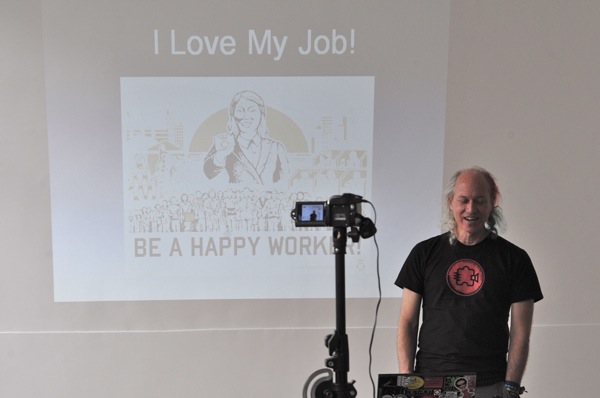
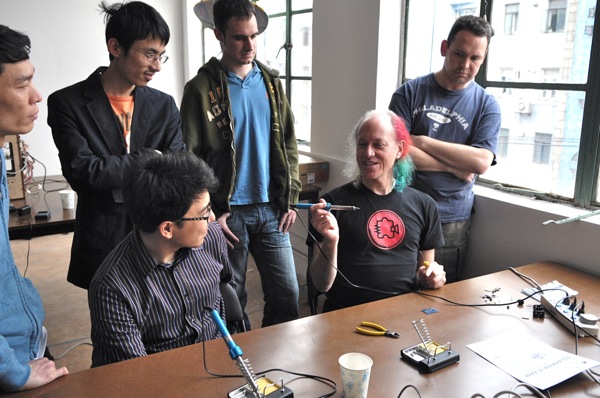
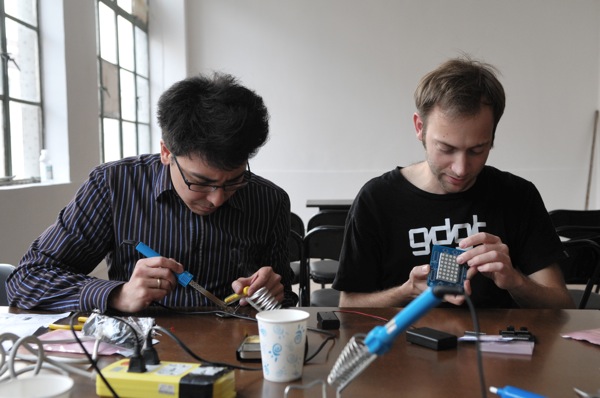

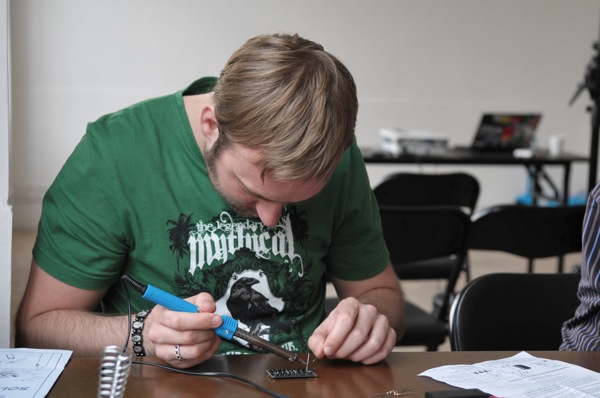
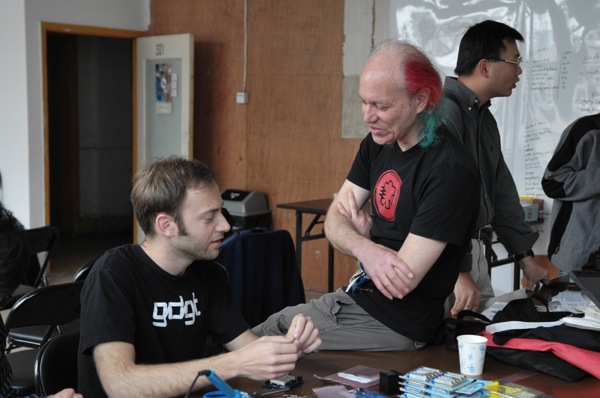
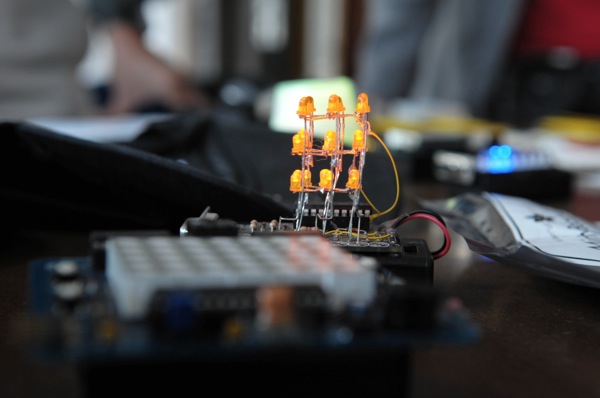
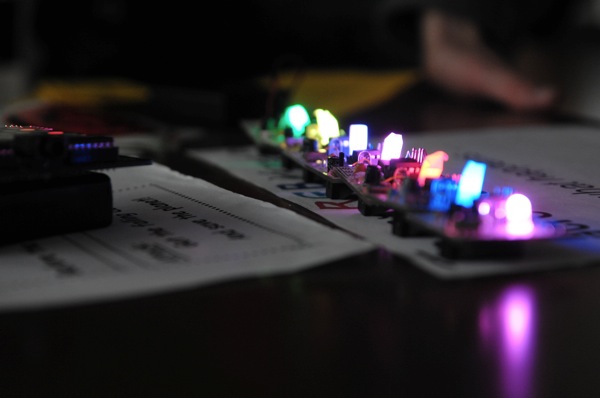
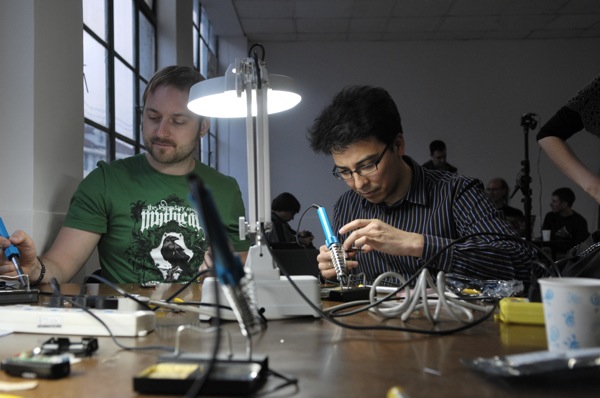


April 18th, 2011 § 4 comments § permalink
I Love My Job!
Mitch started with a good slide. Loving your job is important!











March 26th, 2011 § 0 comments § permalink
Aaajiao of Xindanwei gave a talk on what it took to run a space and his personal experience with making and hacking. XinCheJian goes well back with Xindanwei from working together on Scratch for Kids to incubating XinCheJian on 2F of YongJia Lu location.
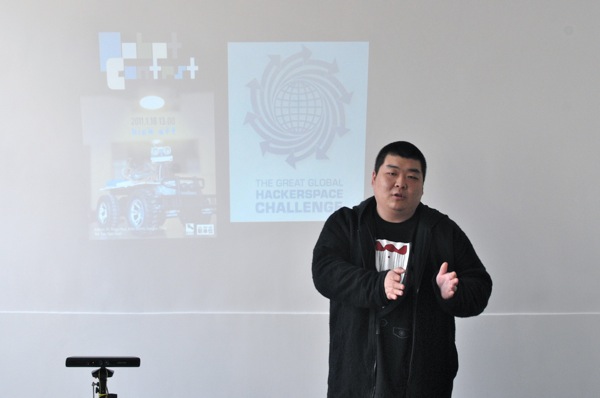
March 14th, 2011 § 0 comments § permalink
I shoot this a while back to promote Hackerspace but never get around to publish it. Strobist is the tinker of light and the hacker among photographers.
Some strobist setup info here:
- SB-600 inside the makerbot - SB-800 on shoot-through umbrella to the camera right]]>
March 14th, 2011 § 0 comments § permalink
Loongson the Chinese MISP CPU is making news as China launched the new supercomputer totally based on this CPU. At barcamp, there was a session called “Lemote => Cuba.” Kind of cryptic. As I passed by the room, I saw a long time open source friend sitting inside. I pop my head in and realize it’s the Jiangsu based Lemote which makes desktop computers based on Loongson CPU.
Talked to the speaker Dr. Qiao and he said the box are shipped to 41 countries and one of the biggest customers is Cuba for only a few hundreds RMB each. The size of the box is about the same as Cuban Cigar box. Kind of funny mental picture of exchanging Linux box for cigar. The box runs Lemote-Linux and Loongson 2B at 900 Mhz. There are no fan inside the box so it’s totally quiet and low power consumption.
It’s also kind of interesting to think this Linux box is one of the force stopping the MS/Intel invasion of Cuba. Freedom box from China to Cuba? How ironical is that?
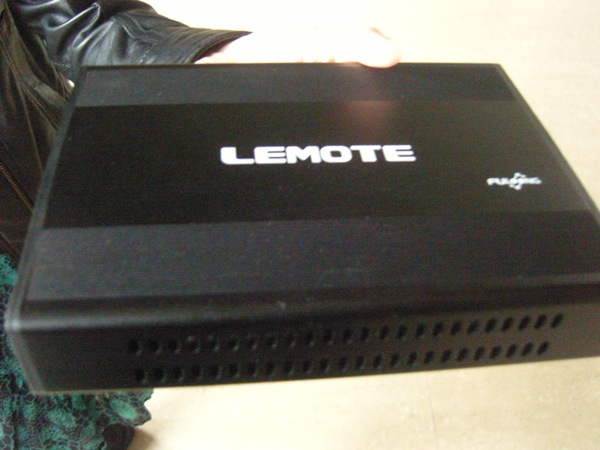
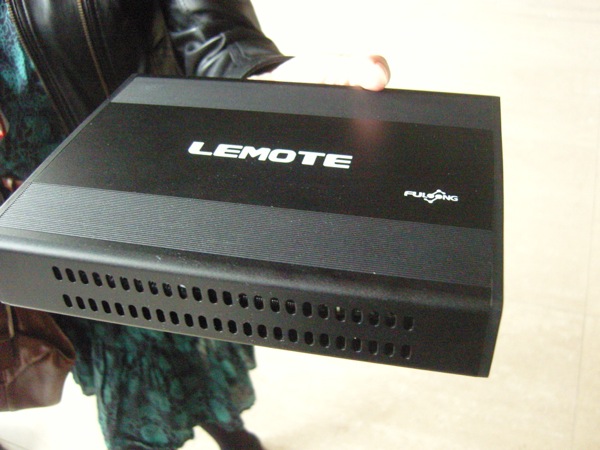
March 5th, 2011 § 0 comments § permalink
#ym4-arduino-uno img { margin:5px; padding:5px; display:block; }
Another weekend night of hacking fun hooking up a Arduino Uno with YM4 robotic car from EmbeDream. The YM4 is a well designed FIRA compliant robot car with built in power supply. The left and right wheels are controlled independently and the built in feedback from wheels.
The break out board for the YM4 is easy to work with. The H-bridge control are CT1, CT2, and CT3. CT1 control the speed with PWM and CT2/CT3 decide the direction of the wheel. This is the same configuration for both wheels. The following is a quick sketch to get YM4 going forward.
#define RIGHT_CTRL_1 5
#define RIGHT_CTRL_2 6
#define RIGHT_CTRL_3 7
#define LEFT_CTRL_1 11
#define LEFT_CTRL_2 12
#define LEFT_CTRL_3 13
void setup()
{
pinMode(RIGHT_CTRL_2, OUTPUT);
pinMode(RIGHT_CTRL_3, OUTPUT);
pinMode(LEFT_CTRL_2, OUTPUT);
pinMode(LEFT_CTRL_3, OUTPUT);
}
void loop()
{
digitalWrite(RIGHT_CTRL_2, 0);
digitalWrite(RIGHT_CTRL_3, 1);
analogWrite(RIGHT_CTRL_1, 128);
digitalWrite(LEFT_CTRL_2, 0);
digitalWrite(LEFT_CTRL_3, 1);
analogWrite(LEFT_CTRL_1, 128);
}
Now, the TODO list
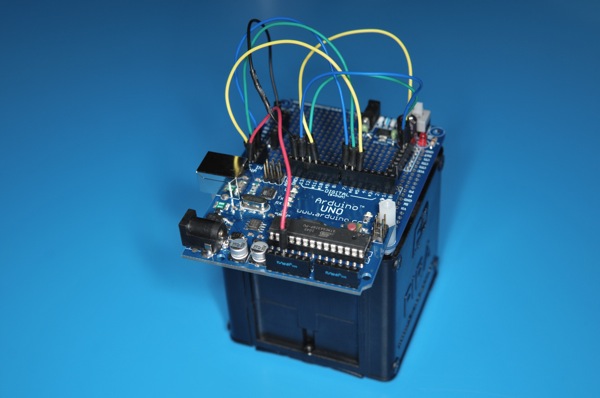
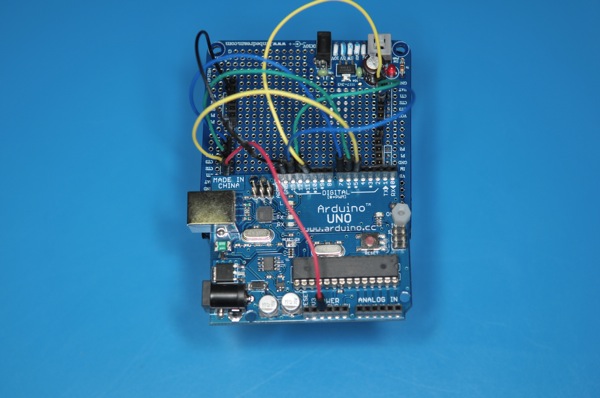
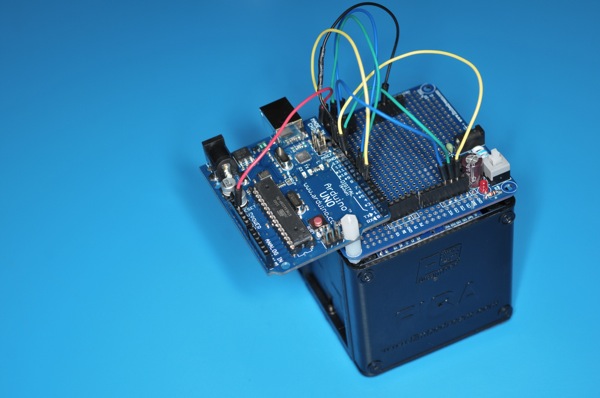
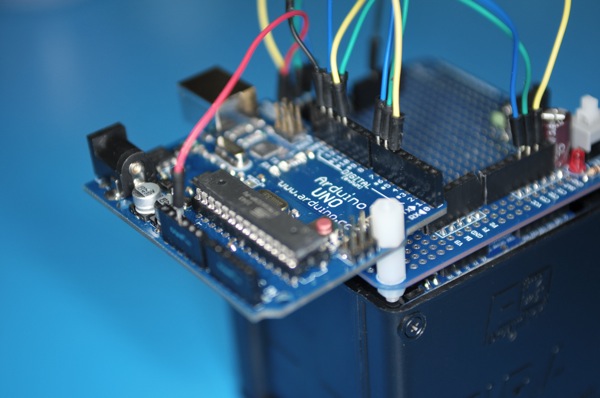
February 25th, 2011 § 0 comments § permalink
We received visitor from Nanjing based EmbeDream today. The gust come bearing gift of their open source FIRA bot. It’s of great design and I can’t not wait to try to hook it up to Arduino to have some fun! Here are some photos of the bot.
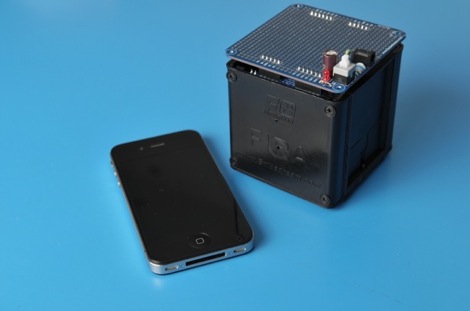
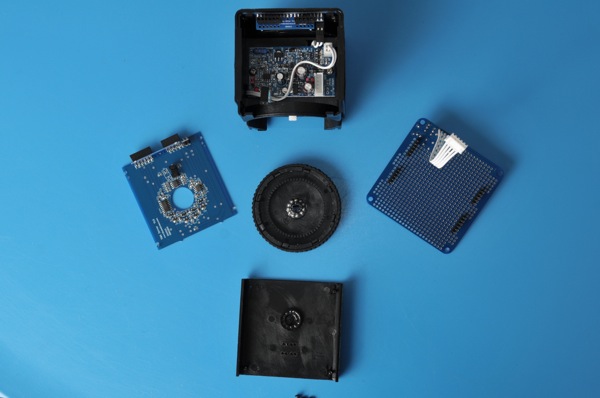
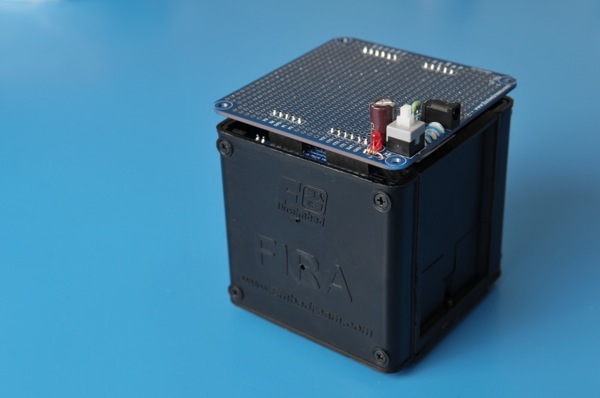

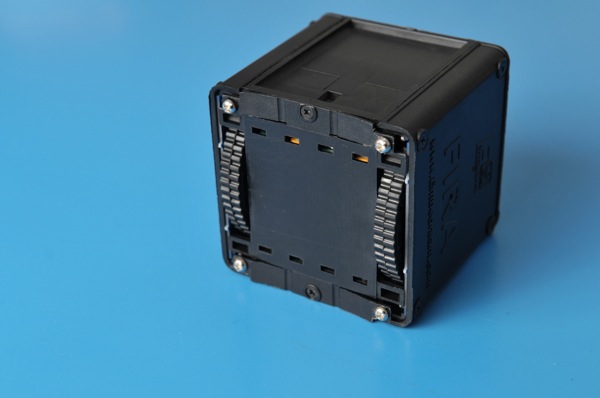
January 17th, 2011 § 0 comments § permalink
Xindanwei end to end.
Ricky kicks off the event with A.R.T. and gave a short introduction to how he got started with the project and how ART was built.
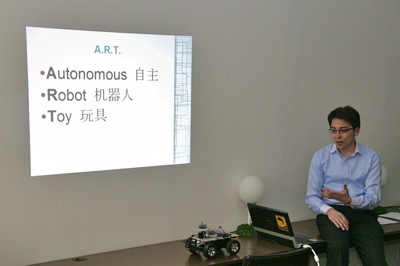 Then we have the introduction to the HCR robots by the presenter also named Ricky. HCR is an open source robot built to for home caring.
Then we have the introduction to the HCR robots by the presenter also named Ricky. HCR is an open source robot built to for home caring.
 And some random photos from the events.
And some random photos from the events.
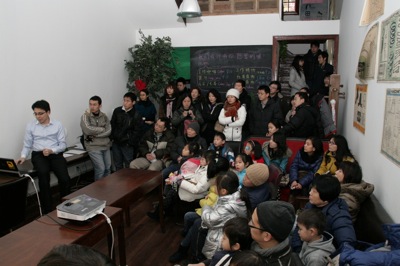 ]]>
]]>
January 3rd, 2011 § 0 comments § permalink
about adding more ultrasonic sensors connected to the Arduino , I’m looking at implementing some of the logic in digital logic gates external to the Arduino… After researching this for a while, I’ve stumbled on something half-remembered from university: FPGA and CPLD. CPLD seems particularly well suited and although my first few applications would be very simple, I’m thinking many of the real-time stuff needed by robotics (sensor processing, PWM control) would be well served by CPLD hardware designs. So I’m thinking about buying these two things: Xilinx Platform Cable USB (programs Xilinx CPLD/FPGA) 228.00元 Expensive but can be used to program very many CPLD XILINX XC9572XL in a DIP40 package: 42.00元 Very convenient packaging that will work with the breadboard in addition to having, from the datasheet, “1,600 usable gate” (about 100 times what I need right now for the ultrasonic sensor selector….) These are some useful links about CPLD: http://bitcycle.org/electronics/1st_CPLD_project/ CPLD’s have a number of useful properties: A small CPLD can replace the function of a handful standard logic IC’s (74xxx etc), a large CPLD can replace the function of hundreds of these. The result is a drastic reduction in circuit board space, and power consumption. The logic function performed by a CPLD is user-programmable. Normally it can be erased, and re-programmed many times. That is: can be changed on-the-fly. What used to be hardware (wires / connections), becomes software (hardware description language). Which input or output pin is used for what signal, can be chosen by the user. This helps to simplify circuit board layout. Many CPLD’s (not all) are in-system programmable. That is: the function of a circuit can be changed after it has been built, without re-wiring or replacing components. The price of CPLD’s (and other programmable logic devices) has come down enough to make their use feasible in many designs. These advantages come at a cost: complexity. While it is simple to connect a few logic gates using 74xxx IC’s, a significant barrier has to be overcome to do the same with a CPLD. This barrier consists of required hardware, software & knowledge. However: once this barrier has been overcome, it becomes easier to modify a design. Also one can tackle more complex designs, that would be (near) impossible using standard logic. http://www.mouldy.org/using-cplds-and-fpgas-in-hobby-electronics As an example, my recent H-bridge controller was implemented on a PIC microcontroller. This worked well enough, but performance was suboptimal, and some nasty hacks were required because the I/O lines couldn’t do exactly what I wanted. With a CPLD, I have dedicated hardware to implement things like the PWM controller, H-bridge logic and I2C interface; these subsystems would have operating frequencies in the hundreds of megahertz, instead of kilohertz. A few years back, there were crippling problems that prevented hobbyists from making use of CPLDs and FPGAs. Just about all of these have been remedied. http://www.triplespark.net/elec/pdev/cpld/ CPLDs don’t replace microcontrollers and vice versa; in fact, they complement one another very well: CPLDs are good if you need speed as long as the complexity of the task is limited. In contrast, microcontrollers can do lots of fancy things but at slower speed. http://www.seattlerobotics.org/encoder/200006/cpld.htm PLDs or Complex Programmable Logic Devices are the next extension to the PLD market. They are today’s technological stepping stone between a handful of discrete gates and a full custom design. What’s more, the silicon manufacturers are so interested in beginning engineers down the path of brand loyalty, that one & two quantity pricing is around five dollars for surprisingly powerful devices. At the same time, entry level software development tools have evolved from multi-thousand dollar price tags to free (Public Domain) Inter Net downloads while at the same time, continuing to gain in power. https://www.seas.upenn.edu/~ese201/vhdl/vhdl_primer.html The highest level of abstraction is the behavioral level that describes a system in terms of what it does (or how it behaves) rather than in terms of its components and interconnection between them. A behavioral description specifies the relationship between the input and output signals. This could be a Boolean expression or a more abstract description such as the Register Transfer or Algorithmic level. As an example, let us consider a simple circuit that warns car passengers when the door is open or the seatbelt is not used whenever the car key is inserted in the ignition lock At the behavioral level this could be expressed as, Warning = Ignition_on AND ( Door_open OR Seatbelt_off) The structural level, on the other hand, describes a system as a collection of gates and components that are interconnected to perform a desired function. A structural description could be compared to a schematic of interconnected logic gates. It is a representation that is usually closer to the physical realization of a system. ]]>
January 3rd, 2011 § 3 comments § permalink
many iterations of both the software (the controller) after updating the platform (sensors+chassis) itself to have an additional ultrasonic sensor looking backward. So now, when I rotate the ultrasonic sensor, I read values in front (right side, angle looking right, looking forward and at angle to the left) and towards the back (left-side, side angle looking backward towards the left, angle straight on towards the back and angle looking backward towards the right). So six values in total… Having the servo rotate the sensors is necessary right now so as not to go over budget on the digital pins of the Arduino Dueminalove board as each of the two sensors require two signal cable (one for trigger and one for echo). I’ve done many changes and many tests but I’m not yet satisfied with the controller for that particular configuration and I still have ideas that I need to implement to make the robot behavior interesting… However, in the meantime, I’m also preparing for the next platform. I’m thinking of designing a circuit to select one ultrasonic sensor at a time out of four. Since two sensors cannot be triggered simultaneously (they would interfere with each other) I would want to trigger one at a time and then wait for the echo. To help with that task, I’ve discovered two wonderful OpenSource software:
December 23rd, 2010 § 0 comments § permalink
http://hackerspaces.org/wiki/Xinchejian]]>